|

Fuzoku Gaho
July 1890 through November 1891
Nos. 18~34, 17 Consecutive Issues
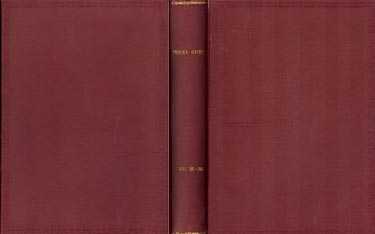
Fuzoku Gaho, Nos. 18-34 (Manners and Customs in Pictures), Tokyo, Toyodo, Meiji 23 (1890).7.10 through Meiji 24 (1891).11.10, 8vo (7 1/2 x 10 in - 19 x 25.7 cm), Japanese language entirely, maroon cloth, bound Japanese format (reads back to front). Each issue has a color (2-3 color) woodblock paper wrap cover. The issues run 20-40 page in length and most contain at least one single page and one double page black and white woodblock plate and several woodcut text illustrations and occasional single or double page black and white lithographed plate. In total there are over 100 plates and over half are double page. An illustrated series on coins runs in seven consecutive issues. The page numbers for this serial run consecutively in the seven issues (i.e. they are not numbered with the rest of the pages in the issue). The serial starts (actually continues from prior issues) in issue 18 (July 1890) at page 33 and ends on page 48 in issue 25 (February 1891). An important and finely illustrated graphic/pictorial journal focusing on life in Meiji era Japan.
Scattered throughout the volume in the margin is a red date imprint reading "Meiji 25(1892).3.26" in Japanese. I presume this indicates the date of publication or distribution of the bound volume.

The first issue of this publication was in February 1889. Publication continued on a weekly basis until 1916.
For an article regarding the Fuzoku Gaho published in 1900, click here.
Examples of Wraps, Woodblocks & Lithographs:
#18 - 23(1890).7.10
Illustrated front wrap
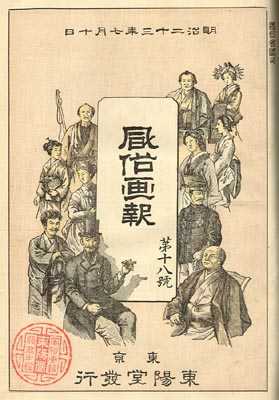 #19 - 23(1890).8.10
#19 - 23(1890).8.10
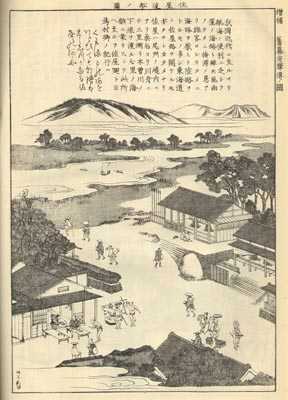 Example of Numismatic/Coin Serial
Example of Numismatic/Coin Serial
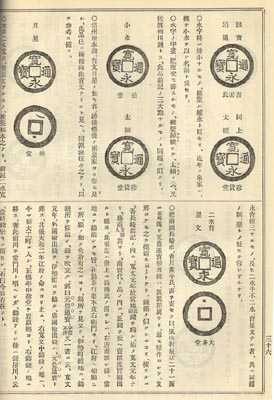 #20 - 23(1890).9.10
#20 - 23(1890).9.10
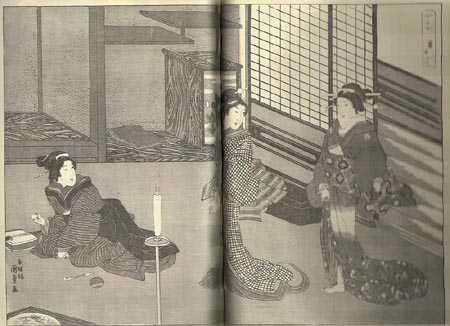 Double page woodblock with single color tint
Double page woodblock with single color tint
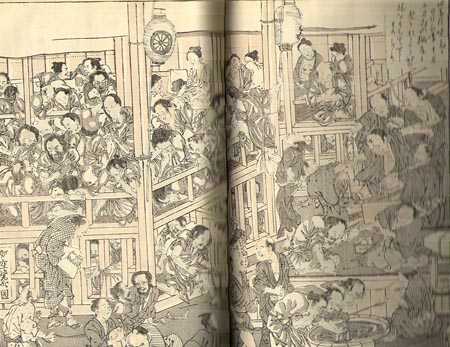 #21 - 23(1890).10.10
Double page black & white lithograph
#21 - 23(1890).10.10
Double page black & white lithograph

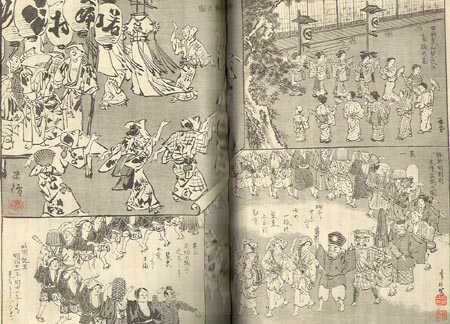 #22 - 23(1890).11.10
Single page black and white lithograph
#22 - 23(1890).11.10
Single page black and white lithograph
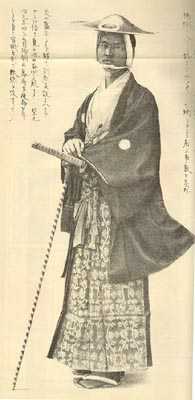 Double page tinted lithograph
Double page tinted lithograph
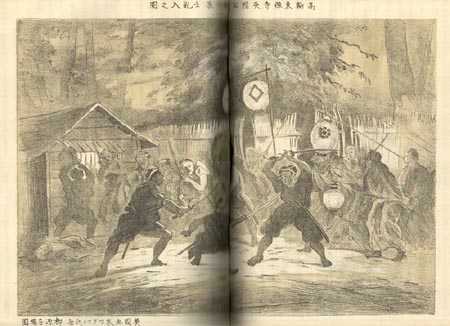 #23 - 23(1890).12.10
Color woodblock, three folds out
#23 - 23(1890).12.10
Color woodblock, three folds out
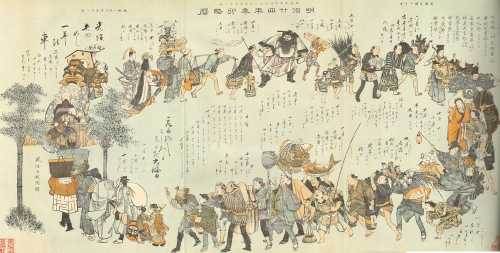 Double page black & white lithograph
Double page black & white lithograph
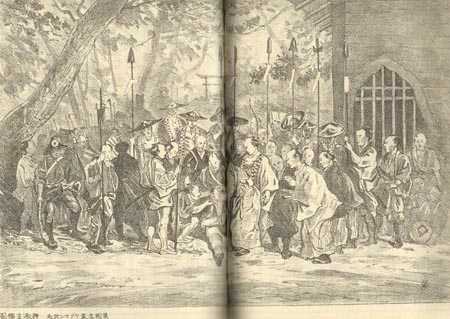 #24 - 24(1891).1.10
Illustration on front wrap changed
#24 - 24(1891).1.10
Illustration on front wrap changed

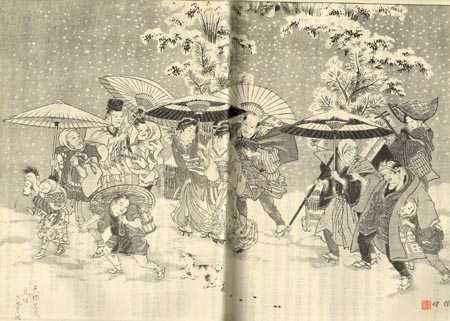
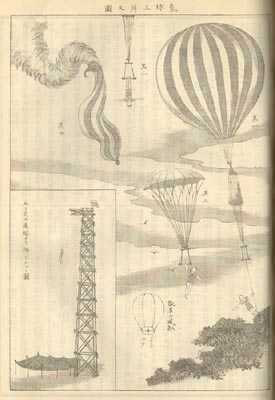 #25 - 24(1891).2.10
Double page black & white lithograph
#25 - 24(1891).2.10
Double page black & white lithograph
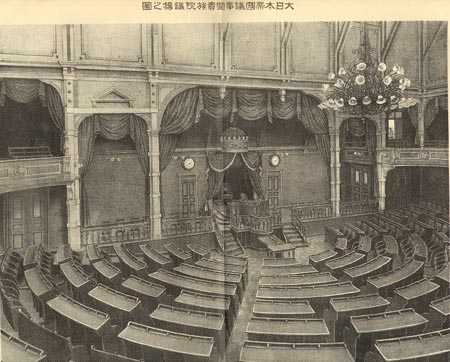
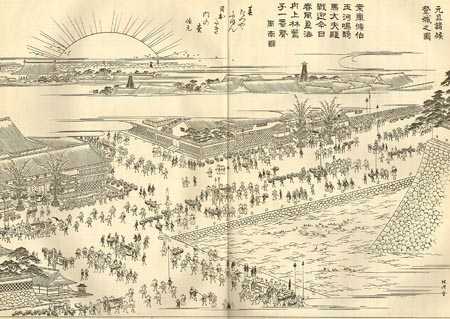 #26 - 24(1891).3.10
Double page black & white lithograph
#26 - 24(1891).3.10
Double page black & white lithograph
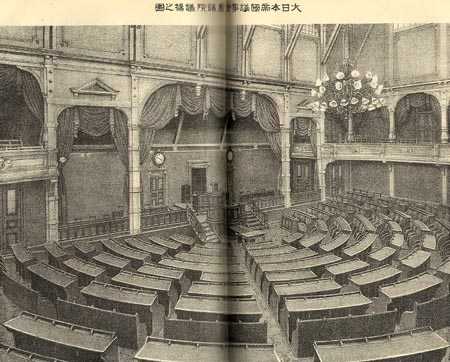
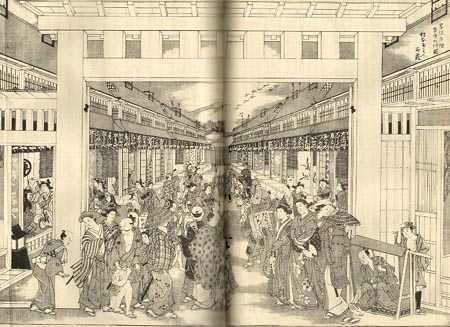 Woodblock of the Ryounkaku in Asakusa ("Asakusa
Twelve Stories") which opened in 1890
Woodblock of the Ryounkaku in Asakusa ("Asakusa
Twelve Stories") which opened in 1890
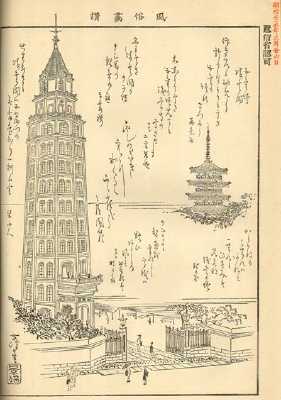 #27 - 24(1891).4.10
#27 - 24(1891).4.10
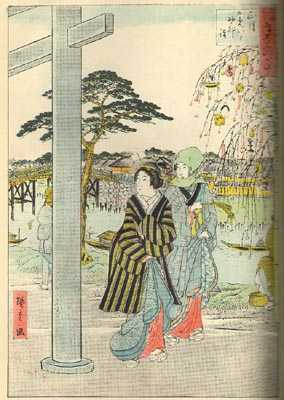 #28 - 24(1891).5.10
#28 - 24(1891).5.10
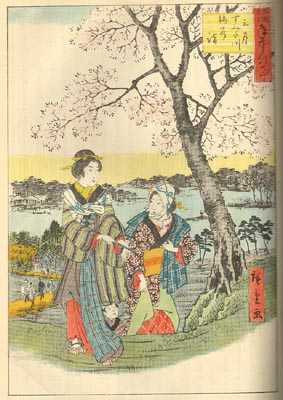 #29 - 24(1891).6.10
#29 - 24(1891).6.10
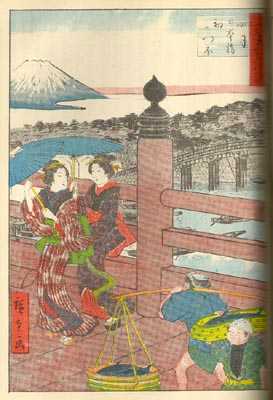 #30 - 24(1891).7.10
#30 - 24(1891).7.10
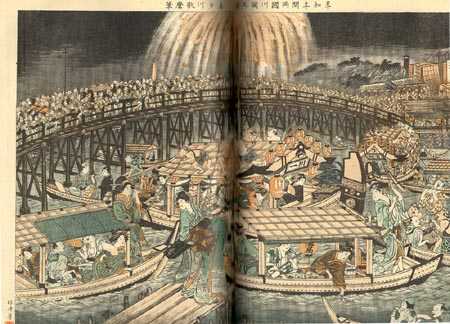 Single page black and white lithograph
Single page black and white lithograph
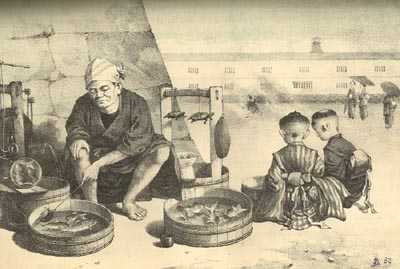 #31 - 24(1891).8.10
#31 - 24(1891).8.10
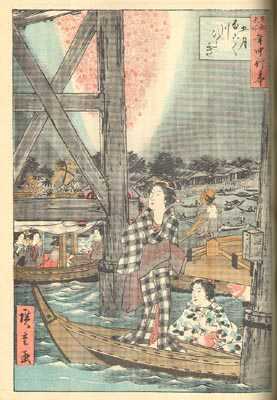
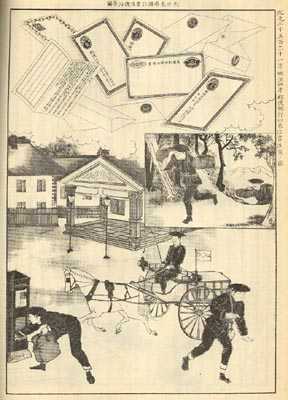 #32 - 24(1891).9.10
#32 - 24(1891).9.10
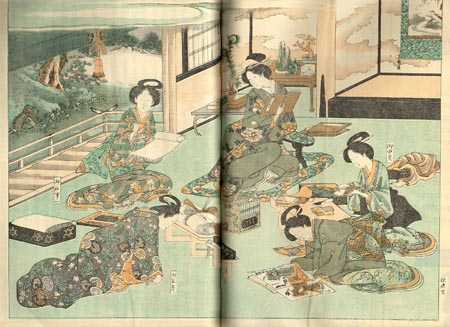 #33 - 24(1891).10.10
#33 - 24(1891).10.10
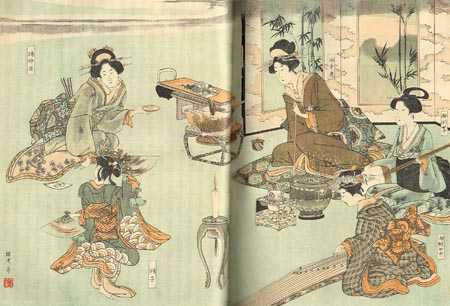 Single page black and white lithograph
Single page black and white lithograph
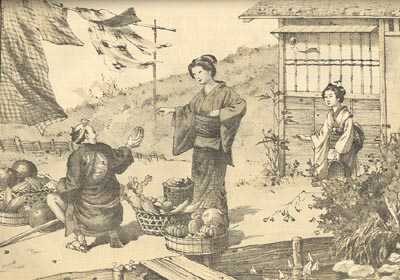 #34 - 24(1891).11.10
#34 - 24(1891).11.10
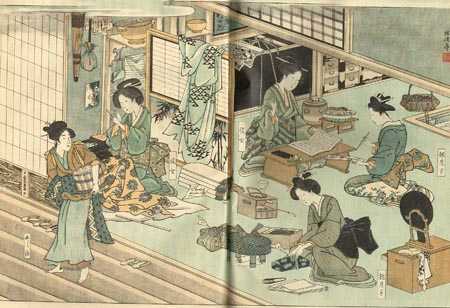 Single page black and white lithograph
Single page black and white lithograph
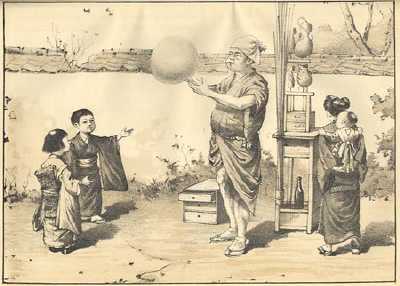 Example of inside a front cover
Example of inside a front cover
(publisher's information?)

The Imperial and Asiatic Quarterly Review and Oriental Colonial Record, Third Series, Volume IX, Nos 17 & 18, January-April, 1900, London, Oriental Institute, printed by Swan Sonneschein & Co, 1900.
Japanese Illustrated Literature and Art.
The Fuzoku Gaho, for example, an illustrated magazine of Japanese life, is a modern press publication, comparatively speaking, in its infancy. It is a hybrid between ancient and recent work, of which many examples are now issued to the Japanese public. The system upon which it is "got up" shows that although Western ideas have been accepted, in many respects the original manner of making books is still studied. The title page and frontispiece will be found at the end of the journal, and the pages number, according to our idea, backwards. The text is given in usual Oriental style, running half-way down the page from top to bottom, commencing from the right-hand side. All matter for reading, either explanations of pictures, news, advertisements, and so forth, is printed in Chinese characters, with the exception of the last page, which is in Japanese.
The illustrations show the influence of Western ideas. The Fuzoku Gaho is profusely illustrated in various ways -- double-paged pictures confined to single subjects, or made up of many sketches, as we find them in our weekly numbers of the Graphic, the Queen, etc. This system is most frequently resorted to where several classes of the community are engaged in the same occupation, or when the old and new version of existing things are set off against each other by way of contrast. Single-paged pictures in black and white or colours, and also small sketches interspersed in
the text, are comprised within the covers of this monthly. The Fuzoku Gaho embraces a variety of subjects of historic worth and present interest -- ancient manners and customs that are rapidly disappearing, such as the secret forging of swords, the cutting of stone implements, the celebration of old-established festivals, down to the latest incidents in Corea and Formosa, thus insuring many readers by the wide range of subjects it embraces.
Occasionally advertisements of English goods appear in a cloud of Chinese ideographs, for instance, the figure of an English watch, printed on coloured paper to arrest attention; and Japanese articles of manufacture are recommended in the same European method.
Owing to the use of Chinese ideographs, in which most printed matter is given, the editing of a journal or newspaper in Japan is no light task. Mr. Henry Norman tells us that the staff employed on a "daily" amounts to nearly a hundred and fifty persons.
As the Japanese equivalent for the Chinese characters employed requires to be kept continually in the ears of those who pick out the ideographs for the printer, the press-room is one murmur of sing-song from the lips of the boys whose business it is to hunt out the types from the tall cases that line the walls. The sounds must be uttered or they cannot be recognised among the many thousand types that need be overlooked for the compilation of an ordinary printed book. The lower classes in Japan cannot understand their journals unless they can read them aloud.
Too much credit must not be placed as yet upon daily intelligence. If news that will interest the public is not to be gained through the day's events, it must be forthcoming from the brains of the reporters. The absence of a general telegraphic system, or any other quick way of disseminating news from one town to another, renders reliable information difficult to collect at a given time. Besides, editors must not give too much to the public, and the large staff necessary is partly owing to indiscretions of this kind. There must always be one or more editors to spare. If injudicious liberality of information has enforced the temporary residence of an editor in a place of silence, safety, and police supervision, another must be ready to take up the work.
The pictures of the Fuzoku Gaho will interest those who have not been fortunate enough to have paid Japan a visit. The introduction of Western hats, umbrellas, boots, shoes, and other garments which take the fancy of Orientals, will be seen to show up conspicuously in the midst of native surroundings. The magazine gives an insight into Japanese home-life, pastimes and amusements, peculiar street trades, performances, scenes of national interest, and other items of life as it exists in the Far East The illustration of two authors writing on the old and new system brings vividly before us the change customs have undergone of late. It is a pity that the perfection of manliness, feminine beauty, and all other human attractions, is so lightly regarded by some of the greatest artists the world has produced. Life, vigour, movement, idealism of line, and all other essentials which lend value to works of art, declare themselves. But the mind tells, through the interpretation of the brush, how little the beauty of Divine modelling of the human form has appealed to the Asiatic. It is not due to defective talent, but simply to the influence of religious and moral training instilled through a thousand generations.
C. M. SALWEY, M.J.S.
(at pages 390-391)
|




 Example of Numismatic/Coin Serial
Example of Numismatic/Coin Serial








 #24 - 24(1891).1.10
Illustration on front wrap changed
#24 - 24(1891).1.10
Illustration on front wrap changed




















